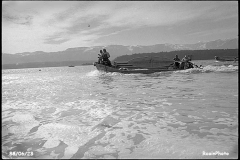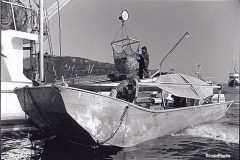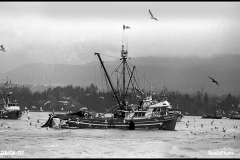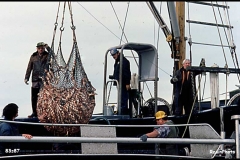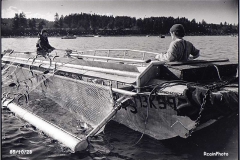Courtenay City Council’s annual appointments announced after a short delay

Free webinar lectures on herring and the protection of natural shorelines in the Salish Sea
Herring fishing near Denman and Hornby island in the 1980s | Bob Cain photo
Free webinar lectures on herring and the protection of natural shorelines in the Salish Sea
The demise of the Salish Sea’s unique population of our resident killer whales confirms what biologists increasingly recognize: that the Salish Sea is “a collapsed ecosystem.”
The food chains that support the chinook salmon populations on which orcas depend have been largely driven to extinction through the destruction of beaches and estuaries that support forage fish on which chinook depend as well as through overfishing.
In keeping with its educational and civic mandate Comox Valley Nature presents a week-long series of five (5) free public lectures on the state, importance and protection of natural green shorelines for herring and forage fish starting Monday, Feb. 22 and ending Friday, Feb. 26 at 10 am.
Although overfishing is an important current public concern, shoreline armouring is no less responsible, even though it is politically overlooked. The state of Washington has recently passed very progressive laws that place the responsibility squarely on landowners, industries and municipalities to reduce and even remove hard armouring detrimental to fish habitat.
To restore BC’s fisheries to a semblance of their original productivity BC must take similar steps. The University of Victoria’s Environmental Law Centre recently published an important report: “Saving Orcas by Protecting Fish-Spawning Beaches”. The report explores legal avenues to enable similar legislation within Canadian law.
Dr. John Nielson (DFO) will kick things off with an overview of the state of herring off Cape Lazo. That will be followed on Tuesday by the UVic Environmental Law Centre presentation.
On Wednesday, Feb. 24 internationally Dr Ignacio Vilchis from San Diego Zoo who is internationally recognized for his work on the negative impacts of hard shores on seabird populations will present “Assessing seabird ecological correlates to inform conservation.”
On Thursday, Feb. 25, Dr Robert Rangeley from the non-profit “Oceana” will present a report on Canadian Fisheries and the importance of forage fish in “Rebuilding fisheries: unlocking Canada’s potential for abundant oceans .
The series will close with Salish Sea Herring Archaeology, an eye-opening overview of the state of herring before contact, as revealed from archaeological reconstructions, by UVic’s Dr Iain McKechnie.
The series is hosted for Comox Valley Nature by the Canadian Society of Environmental Biologists. The webinars are free and open to the public. URL’s for registration is can be found at the CVN website under the heading “CSEB Webinars”,
CVN is a non-profit always welcomes new members. Inquiries should be directed to Dr L. Maingon (250 331 0143). Parties interested in the status of herring in the Salish Sea are encouraged to also sign up for the Hornby Island Herringfest.
SUBSCRIBE TO OUR NEWSLETTER
Courtenay Council announces its regional district line-up and other appointments
A few random items as the 2022 election comes to a close
Long-time public official Bronco Moncrief dies, Manno Theos hangs out in Greece, and Daniel Arbour reacts to lies about his campaign finances
Decafnation candidate voting sheet
A list of candidates endorsed by Decafnation
Join the discussion Oct. 3 about food system security in the Comox Valley
The Watershed Sentinel magazine is hosting a zoom webinar Oct. 3 on food system security in the Comox Valley
THE WEEK: Busting the myth that council members come with a blank slate
The Old Guard faction of Comox Valley political activists has been trying for decades to create a cohesive voting block
Three candidate forums for Oct. 15 Comox Valley elections
See and hear the candidates in person for this fall’s municipal elections. We list the three candidate forums
The Mack Laing Trust: BC Supreme Court hears arguments in 40-year case
Mack Laing Heritage Society says the Town of Comox is in a rush to clean up a mess of its own making, while town and Attorney General lawyers call The Society’s evidence “irrelevant.”
Comox Valley Nature webinar to discuss effect of climate change on marine life
Comox Valley Nature lecture to discuss how this summer’s heatwave killed off billions of sea life and the future for marine ecosystems
New North Island organics processing facility raises concerns about cost, fire and odours
Campbell River environmentalists raise concerns about the the cost and location of the Comox Strathcona Waste Management Commission’s new organics processing facility
Cannabis breeding and genetics centre creates three new strains for Aurora Cannabis
The Cannabis Innovation Centre in Comox, founded by Vanier grad Jon Page and now called Aurora Coast, has produced its first new strains of cannabis and will release them to consumers later this month





